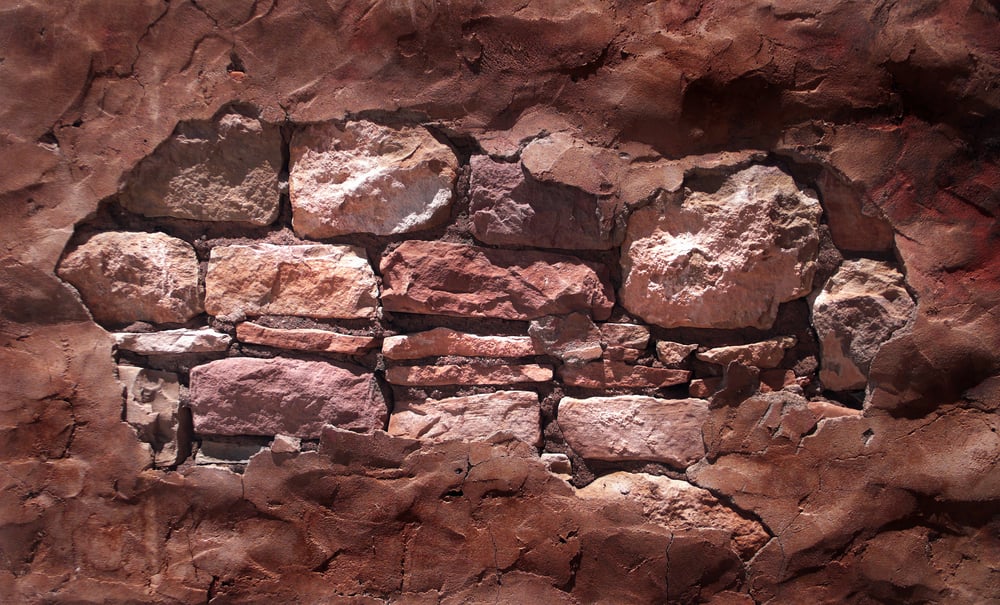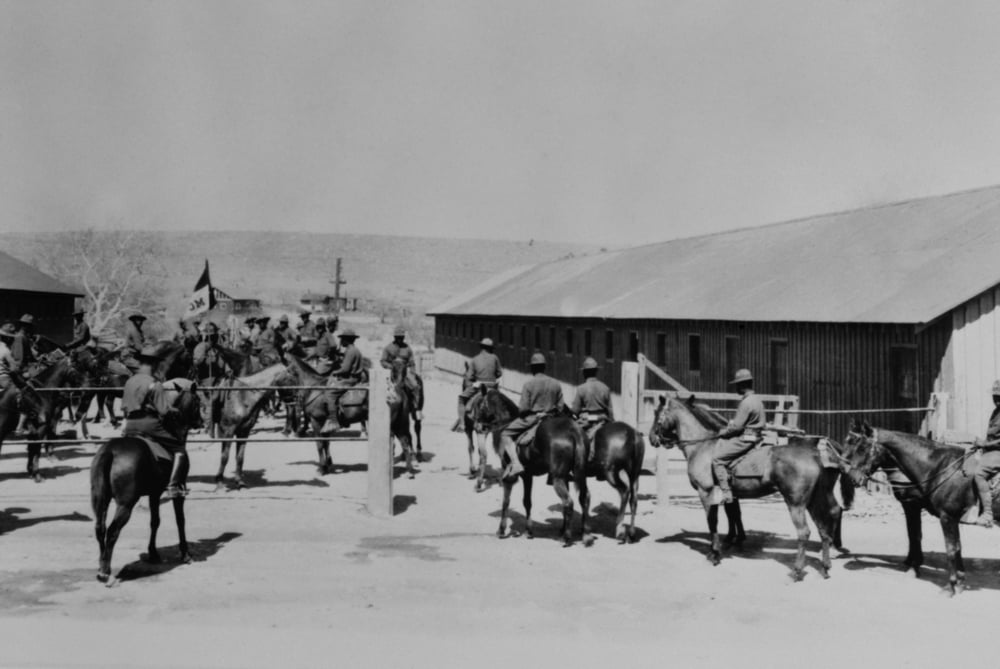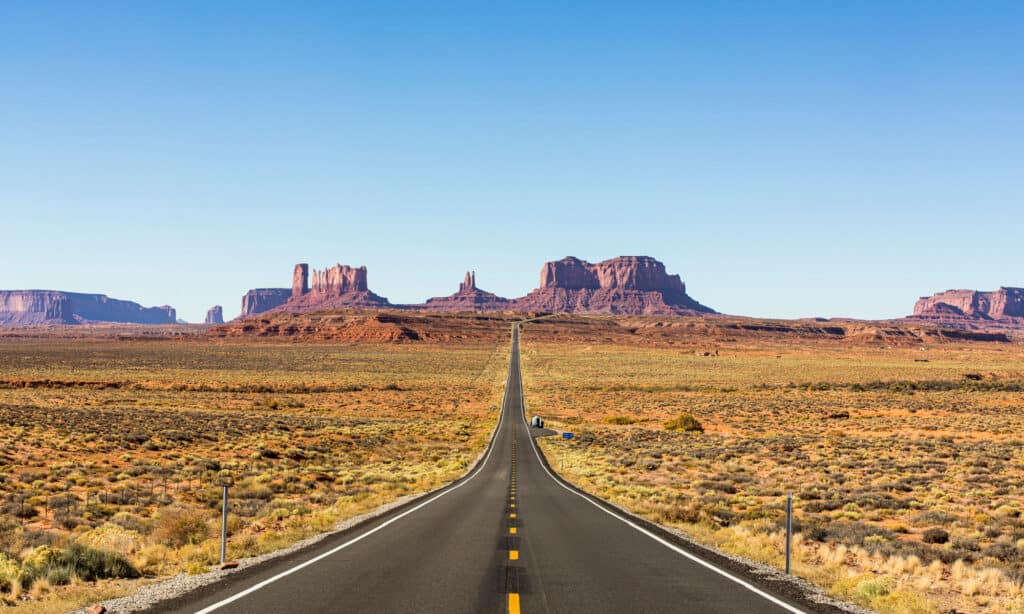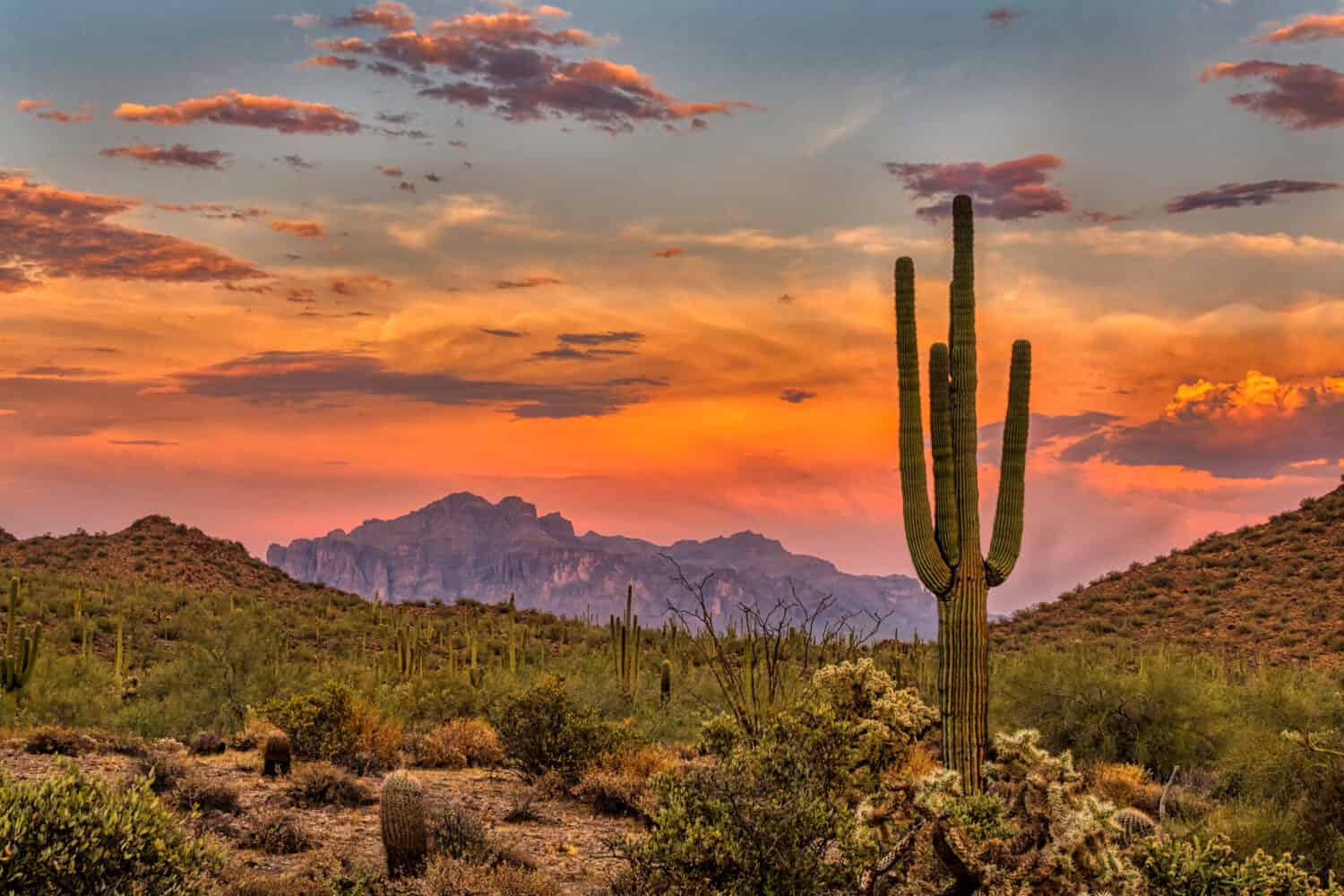A treasure trove of history and culture, according to the National Park Service, Arizona is home to 47 national historic landmarks that offer a glimpse into the state’s rich past. These 8 are the best ones to visit, each with its unique significance. Whether you’re fascinated by ancient ruins, military history, or architectural brilliance, Arizona’s national historic landmarks have something to awe everyone. See the wonders that await you in the Grand Canyon State.
1. 1956 Grand Canyon TWA-United Airlines Aviation Accident Site

A bronze plaque commemorates the 1956 Grand Canyon TWA-United Airlines Aviation Accident Site in Grand Canyon National Park.
©Grand Canyon NPS, CC BY 2.0, via Wikimedia Commons – Original / License
The Grand Canyon National Park is a national historic landmark in Arizona and one of the most awe-inspiring natural wonders in the world. Carved by the Colorado River, this vast and majestic canyon offers breathtaking panoramic views in addition to the Earth’s geological history. The 1956 Grand Canyon TWA-United Airlines Aviation Accident Site holds a somber place in aviation history, where one of the most devastating mid-air collisions occurred. On June 30, 1956, a TWA Super Constellation and a United Airlines DC-7 collided at an altitude of 21,000 feet. This tragic event prompted the implementation of modern air traffic control systems and stricter safety measures.
2. Taliesin West

Explore the architectural wonder of Taliesin West in Scottsdale, Arizona.
©AndrewHorne, Public domain, via Wikimedia Commons – Original / License
Taliesin West is the winter home and architectural school of renowned architect Frank Lloyd Wright in Scottsdale. Taliesin showcases Wright’s innovative design principles and his deep connection with the surrounding desert landscape. This historical landmark blends organic architecture and natural elements. Take a guided tour to explore the various buildings, gardens, and studios, gaining insight into Wright’s creative genius. Additionally, the stunning desert views and the tranquil atmosphere put Taliesin on the list of Arizona’s one of the best national landmarks to visit.
3. Kinishba Ruins

Trace history through the weathered bricks of Kinishba Ruins in Arizona. Image: Erik Wollo, Shutterstock
©Erik Wollo/Shutterstock.com
Kinishba Ruins, located in Whiteriver in eastern Arizona, is an ancient Pueblo site that dates back over 700 years. It was once home to the ancestral Puebloan people. This well-preserved archaeological site showcases architectural features like multi-story stone masonry structures and expansive plazas. These provide valuable insights into this ancient civilization’s construction techniques and community layout. You can explore the ruins by following interpretive marked trails at the ruins.
4. Fort Huachuca

Buffalo
Soldiers at Fort Huachuca in Sierra Vista, Arizona. Image: Everett Collection, Shutterstock
©Everett Collection/Shutterstock.com
Situated in the picturesque city of Sierra Vista, Fort Huachuca is a historic U.S. Army installation that played a significant role in the settlement of the American West. The museum’s standout collection is a dedicated homage to the Buffalo Soldiers, who were a distinguished group of African American soldiers who served here during the late 19th century. The stories of these soldiers provide insights into the struggles and achievements of the American West during a pivotal era. Moreover, the museum houses an array of historical artifacts, including weapons and personal mementos of soldiers who were once stationed in Fort Huachuca.
5. Awatovi Ruins

A traditional Hopi home in the Hopi Reservation in Arizona.
©iStock.com/Konoplytska
Awatovi Ruins is an ancient Hopi village that was inhabited from the 14th to the 17th century. This archaeological site provides insights into the Hopi culture and their ancestral connections. Its well-preserved remnants provide invaluable clues to how the Hopi people lived, their social structure, and their relationship with the land. Above all, the ruins are a treasure trove of architectural wonders, revealing the Hopi’s advanced building techniques and engineering skills. Exploring the Awatovi Ruins is an enlightening experience. In addition to guided tours, visitors can see historical and cultural displays and get a hands-on, educational experience of this remarkable civilization.
6. Tumacacori Museum
Location: Tumacacori National Historical Park, Arizona

Mission San José de Tumacácori is a historic gem within Tumacacori National Monument in southern Arizona.
Tumacacori Museum is part of the Tumacacori National Historical Park, which preserves the ruins of three Spanish colonial missions. The museum showcases artifacts and exhibits that tell of the Spanish colonization of the region. Moreover, they highlight the interactions between European settlers and Native American communities. You can trace the footsteps of early Spanish missionaries and their encounters with indigenous peoples as you tour the museum. Explore the well-preserved mission grounds that take visitors back in time.
7. Ventana Cave

The magnificent Santa Catalina Mountains on the ridge in Tucson, Arizona.
©Katie Dobies/Shutterstock.com
Nestled within the rugged expanse of the Santa Catalina Mountains, Ventana Cave is an archaeological site that contains evidence of human occupation dating back over 9,000 years. Although access to the cave is restricted to protect its fragile remnants, you can appreciate the significance of this ancient site and see the tangible remnants of the prehistoric cultures that thrived in the region.
8. Winona Site

The iconic Route 66 winds its way through to Flagstaff, Arizona.
©iStock.com/Wolfgang Gafriller
The Winona Site in Flagstaff is an archaeological site that preserves the remains of a prehistoric village. This site offers a glimpse into the daily lives and cultural practices of the ancient inhabitants of the region. The excavated structures and the artifacts found on-site, such as pottery fragments and tools, showcase the lives of the indigenous communities that were early inhabitants here. The site offers an opportunity to study the history of human settlement in northern Arizona and the diverse cultures that have influenced the region over the years.
Thank you for reading! Have some feedback for us? Contact the AZ Animals editorial team.








